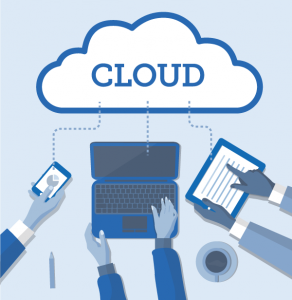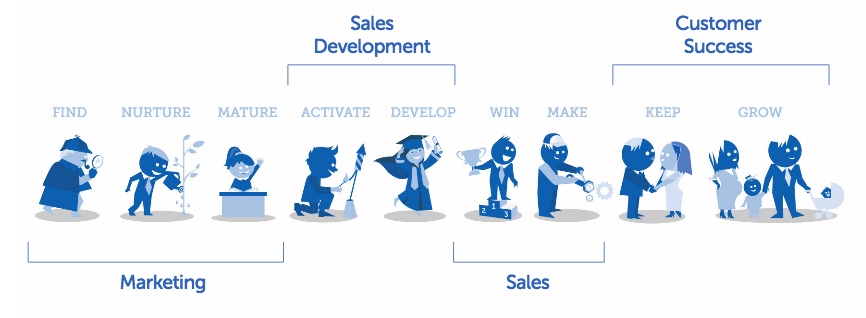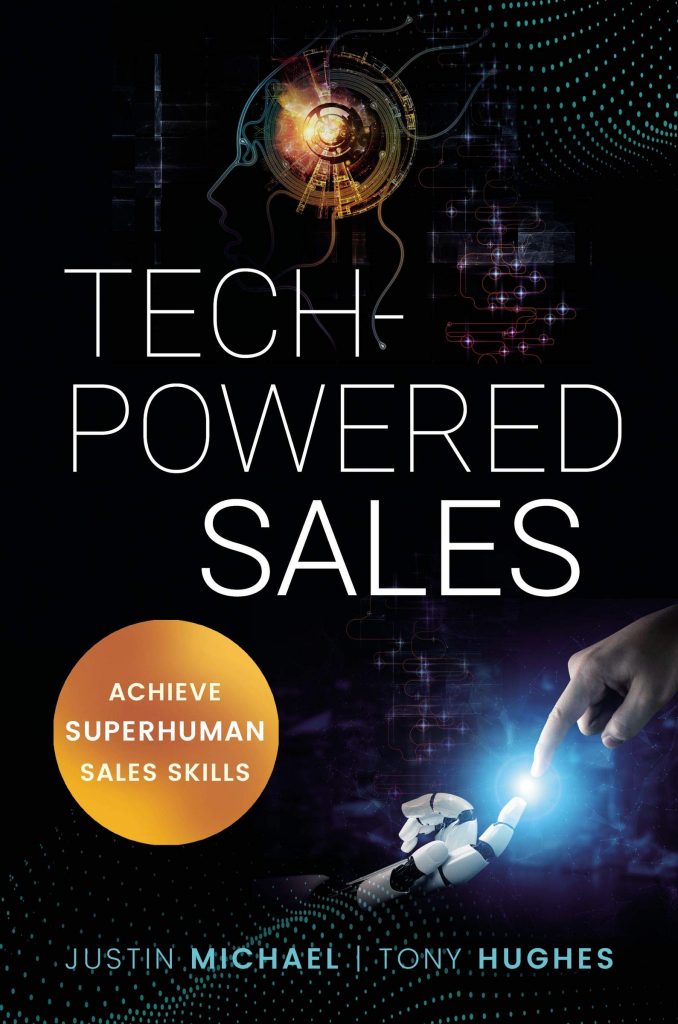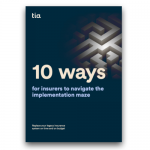Domesticating The Revenue Generation Monster Using AI, Big Data, Automation and Common Sense
Revenue generation starts with filling the funnel at the top. If only a little comes in at the top, your pipeline will be fragile and what comes out at the bottom, unpredictable. This post is about how to stuff the funnel at the top with high-quality leads.
I have always been puzzled by a funny paradox that you find playing out all over the world.
Executives in any company are convinced that they have something of great value to offer the market. If only they could get in front of their potential customers’ executives and tell them their story, then revenue and profit would skyrocket. Despite making substantial investments in marketing and sales organisations with corresponding activities, they still have a hard time generating quality leads, building solid pipelines, and meeting their revenue budgets.
At the same time, they invest in all sorts of measures to block salespeople and marketing messages from other companies from reaching their own executives. So, while any company may believe their potential customers’ executive should be more receptive to their marketing and sales outreach, they don’t believe it should be reciprocated.

Although companies, in general, should be more open to external input, I do understand why they are cautious. We all experience what it means to be disturbed by marketing messages and phone calls from salespeople that haven’t done their homework. And the irrelevant noise only gets worse. We will, therefore, continue to build fences and set up roadblocks, making it difficult for outsiders to steal our time and attention.
Working in Tech, I am talking to companies with great products every day. Products that can create massive value for their potential clients. The situation across the board is that most of these companies are unknown. In many instances, their products and the solutions they drive are so innovative that none of their potential customers are actively looking for them. Getting their attention becomes increasingly difficult. This is because they don’t need to talk to a salesperson until very late in their buying journey. They can find most of the information they need on the internet.
In my recent book, Going Global on a Shoestring, there is a chapter describing a method for how to generate inbound leads. While my method works and doesn’t require massive investments, it takes time to show results and it may not give enough leads to fill your pipeline.
The windows of opportunity in Tech are narrow. Therefore, many companies need to find ways to generate revenue faster. Relying exclusively on an inbound approach often doesn’t cut it.

In my industry (software) the costs of revenue generation became a genuine headache when the shift from the on-premise pre-paid perpetual license format started to yield to cloud-based subscriptions. The cash flow profile of a SaaS business is dramatically different from that of pre-paid licenses.
With the steadily declining barriers of market entry, the supply of software-based products competing for the customers’ attention and budgets is exploding. Software companies need to grow fast, or they will soon become obsolete.
The bottom line of this rather long introduction is that while software companies must grow faster and faster, the customer acquisition cost using traditional lead generation methods increases. Therefore, the discussion about how we can make revenue generation more effective, predictable and scalable is at the top of the agenda.
Outbound Lead Generation
Outbound Lead Generation is a fancy headline for those elements of a revenue generation approach where you go knocking on the doors of your potential customers. You do so when you cannot wait until they find you. You need to find them and start building the relationships that can lead to a sale.
Experience shows that anything outbound is difficult and expensive. Getting the attention of potential customers and persuading them to engage in conversation with you is hard. Scaling such an approach is even harder.
This is where the new book, Tech-Powered Sales – Achieve Superhuman Sales Skills, by Justin Michael and Tony J. Hughes enters the picture. It complements the books on the same subject by Trish Bertuzzi, Mark Roberge, Aron Ross and Marylou Tyler and adds some potentially very powerful tools that I believe can make a significant difference.
The reasons that traditional outbound lead generation is difficult and expensive are:
- The processes are extremely labour intensive.
- You spend more time trying to get hold of people than speaking to them. When you finally come through only a few are interested. The amount of waste is substantial.
- As the amount of rejection (using traditional methods) is also substantial, qualified staff are difficult to find and churn rates are high.
The books by Trish Bertuzzi, Mark Roberge, Aron Ross and Marylou Tyler addressed the challenges by introducing value-based and sequenced messaging, combined with the division of labour principles.

A new job category, sales development (SDR), was introduced and is now the standard in most tech companies. Salespeople have now become Account Executives (AE).
Relevance and Timing
If there are two words that justify why investing time and money in designing tech-based outbound lead generation programs will pay off, then it is relevance and timing.
Using the technology tools recommended in Justin Michael and Tony J. Hughes’ book, companies can design programs where the probability of hitting their potential customers at a time when they are prepared for change increases substantially. The tools can also ensure that the outbound messages match the change for which the potential customer is open. They can ensure that there is a high probability of a match between the need and the solution. And the effort becomes scalable.
The Ideal Customer Profile
The book is a mix of using established best practice methods and the application of new technology. I like that approach because applying technology and automation to crappy processes and bad behaviour will only damage your brand. The book is very explicit about this risk and continuously warns against electrifying bad behaviour. The objective is not to mega-spam, but to become more precise and selective.
So, before you start applying the advanced technologies described in the book, there are some good old housekeeping exercises you need to get on top of.
The first one is The Ideal Customer Profile.

The book describes precisely how you define the characteristics of your ideal customers, including the people within the potential customer’s organisation. It is a fundamental element of any revenue generation activity that you need to define your target audience. However, the book takes it several steps further and explains how you find these companies, including the contact information of the people with whom you need to get in touch.
The first part of being relevant comes from only reaching out to potential customers that can get massive value from what you offer. That’s stating the obvious, but the book explains exactly how you do it.
Timing
The second part comes from hitting a window in time where the potential customer is mature for change.
Before this book and using traditional methods, it was hard to predict when the time was ripe. When would a potential customer be receptive to a certain message?
Not anymore.
 Using trigger events and technology it is now possible to identify companies and people that are mature for change BEFORE you reach out to them.
Using trigger events and technology it is now possible to identify companies and people that are mature for change BEFORE you reach out to them.
The book takes it a step further and explains how you can mass-craft messages that are specific and relevant to the type of trigger event found for the individual company and person.
This is where LinkedIn Sales Navigator, Big Data and AI comes into play. Using the information available internally and on the internet, it is now possible to identify companies and people that may be receptive to the kind of change that your products support.
Even with outreach that is timelier and more relevant, getting the attention of busy executives remains difficult. The book, therefore, explains how to design multi-touch outreach sequences and how to use modern technology to make the phone call when the probability for a positive response is the highest.
Implementing And Using Revenue Generation Technology

In the mid-1990s, I, in my capacity as VP of sales and marketing with the company RE Technology, introduced a CRM system to support our Miller-Heiman approach. The system I chose was originally based on Lotus Notes, but as we were a Microsoft shop, the vendor promised to deliver a version running on Outlook. It became a disaster. The vendor was late in delivering, our CIO didn’t support it and my staff had no appetite for a system making their work more transparent. I saw a need for optimising our revenue generation processes. My staff did not. I left the company in 1997 when it was acquired by BARCO. The CRM system disappeared in the merger process.
In 2005 I invested in and became active in a company that developed marketing automation software. It was a multi-channel platform that enabled marketers to design and execute coordinated on- and offline sequenced campaigns. Using the platform we could measure the effectiveness – ROMI – of each channel used.
Although it was a cloud-based SaaS offering with a low monthly subscription, selling the platform was an uphill battle.
I was very enthusiastic about what the platform could do but presenting it to potential customers I came to learn some important lessons.
In 2005 marketing people were not used to multichannel, they were not used to sequenced outreach and they were not technically savvy. They didn’t have the skills required to take advantage of such a platform. Some were afraid of the technical requirements, and some were even openly reluctant to take on a system that could measure their performance!
We established an academy and were successful selling training courses but came to realise that most marketers didn’t have an appetite for becoming programmers. To become successful with our platform they needed to either buy in substantial external support or hire marketing engineers and content creators.

Much has happened since those days, but I still have the impression that there are reasons why marketing and salespeople seldom consider careers as programmers.
The technologies required to achieve the level of automation and effectiveness described in Justin Michael and Tony J. Hughes’ book are readily available. More and more companies enter the Revenue Generation Technology market offering more sophisticated and user-friendly solutions. However, implementing the software as a platform and using it in daily operations requires skills that most companies do not have. The book is not particularly precise on what skills are required, what it takes to implement the solutions and how you enable and motivate marketing, SDRs and AEs to use them in their daily work.
It does mention the concept of RevOps, which I believe is crucial for successful implementation and use. You need revenue operation technicians that are responsible for designing the architecture, sourcing the components, and integrating them into operational platforms. Then you need revenue operation specialists that help the marketing, SDRs and AEs design operational vehicles, and finally, you need resources to mentor and coach.
I don’t believe you can expect that marketing staff, SDRs and AEs will possess the technical skills required to define and execute the campaigns. They should be considered users and the handles they must pull should be intuitive and very easy to use.
Companies that understand and are humble to the complexity of revenue generation technology can derive massive advantages over their competitors. They can grow faster and enjoy decreasing customer acquisition costs. However, it requires a considerable investment upfront. You need to engage the people that can make it happen and give them the room to define the architecture, source the components and implement the solutions. They will make mistakes, so give them room to fail and learn.
Reading Justin Michael and Tony J. Hughes’ book is the place to start.
Tech-Powered Sales – Achieve Superhuman Sales Skills

Title: Tech-Powered Sales – Achieve Superhuman Sales Skills
Authors: Justin Michael and Tony J. Hughes
Published: June 29, 2021
Number of pages: 272
Reviews: Mostly good reviews.
Recommendation: It’s a great book if you can ignore the jargon-filled writing








